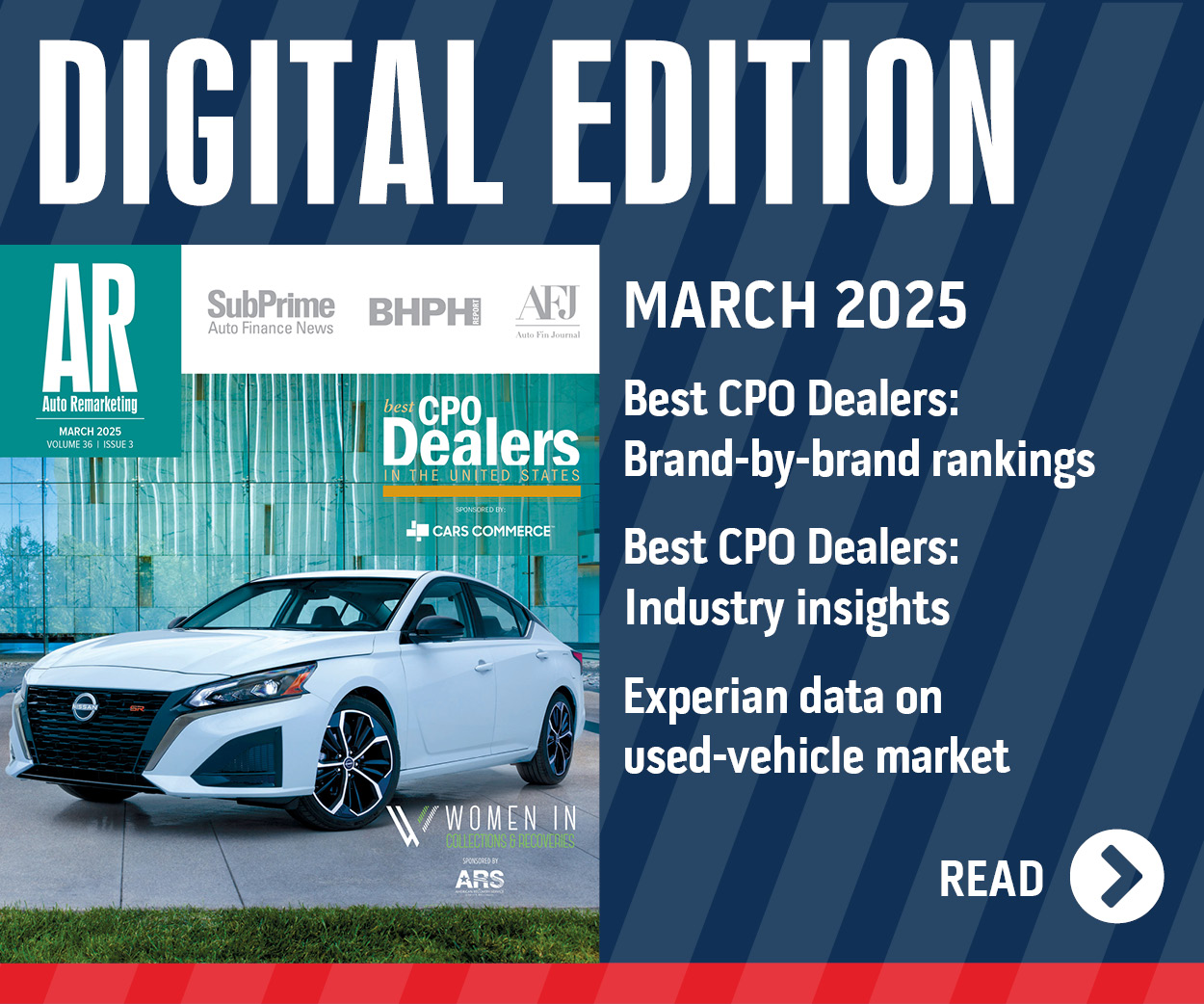Maximizing mobile in used-car retail

You really can’t get away from smartphones. Go ahead. Try. You’ll see them everywhere: on the subway, at the park, in the classroom, sometimes at the dinner table.
They’re also really prevalent in the car-shopping environment, including the used-car marketplace, where some two-thirds of shoppers are browsing used cars on a mobile product, according to LotLinx.
Auto Remarketing asked Sean Stapleton of VinSolutions about mobile’s role in the used-car retail environment, and whether it’s being utilized as more of a research tool, advertising tool, sales platform or some/all of the above.
“All of the above. Mobile is omnipresent. It’s everywhere,” said Stapleton, vice president of sales and marketing for VinSolutions.
“Shoppers are using multiple mobile devices to shop. Customers are relying on mobile-friendly dealer websites to get one-click directions to the showroom right from their mobile phones. Dealers are using mobile as an opportunity to connect with shoppers and initiate the sales process,” he continued.
“Basically, mobile is enabling dealers to be everywhere their customers are, which allows them to better meet their customers’ needs,” Stapleton continued. “Mobile allows dealers to develop stronger relationships with their customers, as they can better listen to their customers and deliver the content they want, when and where they want it.”
We posed the same question to Denise Chudy, the co-founder and chief executive officer of LotLinx.
“We see that 65 percent of shoppers are looking at used-car listings on a mobile device. Mobile is one trend where I believe dealers are leading,” Chudy said. “So often our industry is typified as a laggard. Not with mobile!
“Dealers got the magic of mobile early, understanding that mobile is a strong marketing platform as well as an effective platform for communicating with shoppers,” she added.
One such retailer that has apparently captured the strength of mobile is Montrose Automotive Group out of Akron, Ohio.
Aytomic, Montrose Auto Group ‘incubate’ homegrown media app
Engaging tech-savvy customers. Bolstering service and sales opportunities.
Aytomic Technology and the Montrose Automotive Group had these simple, yet simultaneously difficult, goals in mind when they set out on a collaborative effort over a year ago to craft Montrose’s branded dealer mobile application.
But why shoot for an app? Why not just make the dealer websites as mobile friendly as possible? Shawn Inks, the co-founder and vice president of sales at Aytomic, says that’s simply not good enough.
“Hands down, you could have the best mobile website in the world but the functionality does not compare to having a mobile app,” Inks said. “There’s just so much more you can do on an app than you can on a mobile website.”
Checking out the Montrose mobile app, you’ll notice a few features pretty quickly. You can check the new and used inventory for each of the group’s 13 dealership locations. You can request test drives. You can evaluate trade-ins and save your favorite vehicles for later perusal.
If you’re a dealer, you may be saying to yourself, “Hey, my site can do all of those things, too!” You’d probably be right, but that’s not the point. According to Inks, whose company prides itself on user experience and user design, it’s all about the customer experience.
“It has to be super simple,” Inks said. “Some of the most popular and most innovative apps out there, at the end of the day, they’re super simple for the average user. And that’s so important when you’re dealing with the mobile space.”
And that points to one major drawback of mobile-friendly websites: they can be clunky. They don’t always render correctly because there are just too many phones and browsers to take into account. With a mobile application, not only are you designing it specifically for compatibility with a variety of cell phone operating systems, but you’re also occupying what Inks considers prime “real estate.”
“The real estate on our phone, it’s so limited,” he said. “By getting a dealership’s brand on there, that’s a very valuable piece of real estate.”
When weighing whether or not your dealership would benefit from a mobile app, it’s important to find out how many of your customers would benefit from it, specifically. According to Inks, while working with Montrose, they found that roughly 42 percent of customers visiting the group’s websites were using a mobile device.
Following field testing that began at the end of 2014 and a complete roll out of the app in April of this year, Montrose has been experiencing heavy traffic via its app. According to Inks, over 55 percent of the group’s customer base is using the app on a month-to-month basis. And out of those customers, roughly 40 percent are used-car shoppers.
Staying connected
While presenting inventory for interested shoppers and connecting them to dealer personnel is certainly a beneficial goal of the app, the customer engagement doesn’t end after a vehicle is sold. The app also has a “My Garage” function, which allows customers to register the vehicle they bought and sign up for service notifications, reminders and other such promotions.
“If I could get anything across, the application is for both engaging sales and service opportunities,” Inks said, “and then, most importantly, strengthening the relationship between the customer and the dealership.”
Speaking with John Thompson, the social media and Internet marketing manager at Montrose, the app has already begun to help both the sales and service sides of their business.
“I would have to say the service scheduling has been a big weight lifted off our advisers’ and our receptionists’ shoulders that handle the servicing schedules, for just standard oil changes, tire rotations, things of that nature,” Thompson said.
“On a sales side, what has really been a godsend with this application for us from a dealership standpoint is the ability for a customer to come in after hours, on a Sunday afternoon, Sunday evening, 6 to 7 p.m., when they don’t want to be bothered by sales people,” Thompson continued. “They can gather the information via the VIN number, the stock number, they can look up the car right then and there.
“We’ve got stickers promoting (information to) download the app to gather the sales price, Carfax report, all that pertinent information to those customers as they walk the lot.”
Another nifty feature from the app, benefitting customers and employees alike, is the “Your Sales Representative” feature. Safer than handing out a card, the feature lets customers select their preferred salesman within the application, helping them both stay in contact with one another.
“Not all salespeople are created equally, right? But what this can do for an organization is it can level your playing field for your salespeople, because the fortune in sales is the follow up. We all know that,” Inks said. “And following up with those customers in a timely basis, reminding them of opportunities, reminding them of inventory availability, that’s huge.
“And if the dealership knows that every customer that’s showed interest in a vehicle on the app is going to be presented with options for other available vehicles that might fit their needs, or price drop alerts, or reminders for new inventory, it’s creating that almost-automated follow-up system that levels a little bit of the playing field for the dealership to really make sure that the customers know that there are options for them to come by.”
And creating that engagement, keeping customers informed, according to Inks, that’s what it’s all about.
“It’s not about selling customers anymore,” he said “It’s really about informing them. And if they have the information that they need, then they’re going to come back to the company that they feel the most comfortable doing business with. So it’s about creating a good experience.”
This story appears in the Oct. 1 edition of Auto Remareketing, our look at Digital Trends, Tools & Strategies on the retail side of the used-car market.

 View The Latest Edition
View The Latest Edition

